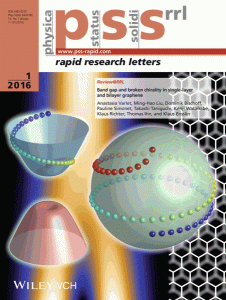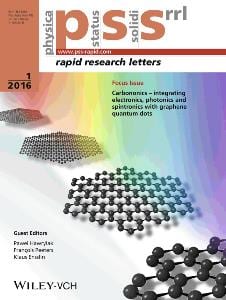 physica status solidi – Rapid Research Letters has published a new special issue devoted to Carbononics, an emerging area of research enabled by graphene. The focus issue consists mainly of Reviews@RRL invited by guest editors Pawel Hawrylak (University of Ottawa, Canada), Francois Peeters (University of Antwerp, Belgium) and Klaus Ensslin (ETH Zürich, Switzerland).
physica status solidi – Rapid Research Letters has published a new special issue devoted to Carbononics, an emerging area of research enabled by graphene. The focus issue consists mainly of Reviews@RRL invited by guest editors Pawel Hawrylak (University of Ottawa, Canada), Francois Peeters (University of Antwerp, Belgium) and Klaus Ensslin (ETH Zürich, Switzerland).
Why should we be interested in carbononics? While current semiconductor technology is extremely successful it has disadvantages in terms of growing power dissipation, use of rare elements in limited supply and classical principles of operation. The potential of quantum applications for carbon-based devices is some of the motivating factors in search for alternative technologies.
Carbononics is about creating artificial materials with carbon atoms. Starting with 2D graphene, one can now attempt to engineer a new class of materials, such as graphene quantum dots, by controlling lateral size, shape, edge, sublattice symmetry, strain, number of layers and carrier  density. Research on graphene quantum dots is at an early stage, from top-down etched quantum dots with millions of atoms to colloidal quantum dots with hundreds of atoms.
density. Research on graphene quantum dots is at an early stage, from top-down etched quantum dots with millions of atoms to colloidal quantum dots with hundreds of atoms.
This special issue covers the current status of research on graphene quantum dots, starting with their electronic properties, spintronics implemented through sublattice engineering and optical properties of graphene nanodevices. The goal is to summarize what is currently known about electronic properties of graphene quantum dots, what is needed to make further progress, how one can realize different functionalities and stimulate research toward their integration. The ultimate goal would be the realization of a graphene based quantum circuit.
From Preface to the special issue prepared by the guest editors

















